Annual flowers for a summer residence: types and selection rules

Annual flower crops certainly don't deserve to be scorned. The fact that they are grown for only one year is not a disadvantage, but an advantage, because you can renew the plantings every summer. But you should study this topic deeply in order to exclude mistakes.
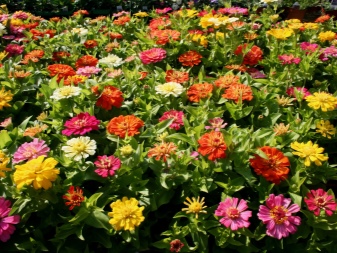
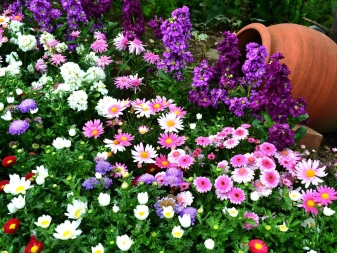
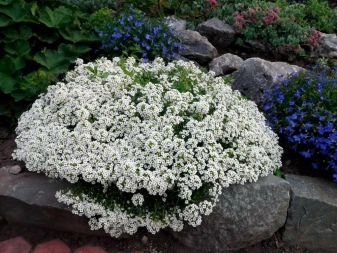

Peculiarities
The use of garden annual flowers for summer cottages is widely practiced. With their help, it is easy to form a variety of patterns, since such cultures will bloom constantly, and they are characterized by a variety of colors. With the help of annuals, you can quickly place accents in the form of bright spots. They will also help when closing the voids left after harvesting perennials. Most importantly, the landscape design transforms almost instantly.
The typical annual is unpretentious and drought tolerant. Florists do not have to establish sophisticated care and wait for the plant to bloom. The use of such crops in landscape design is also very diverse. They are used for mixborders, carpet flower beds and flower beds. It should be borne in mind that there is no hard boundary between annuals and perennials - many initially perennial crops in a harsh climate have only one growing season.
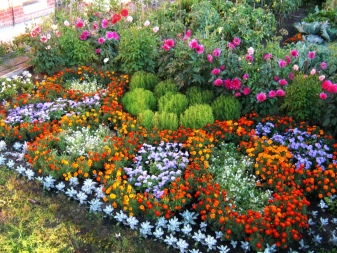

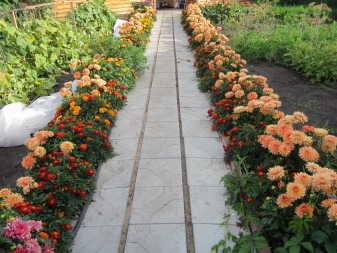

The cycle consists of the following parts:
- spring - sowing seedlings or planting in a permanent place, transplanting seedlings and thinning seedlings;
- summer - leaving, sometimes collecting seeds;
- the beginning of autumn - cleaning the suburban area from plants that stop blooming.

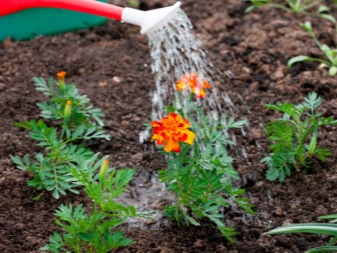


Most popular types
Undersized
Low-growth crops are in wide demand, with their help it is easy to decorate any flower bed. Decorative low annuals are often used to form non-standard looking compositions. Many of them are mentioned in the lists of plants that bloom all summer and even capture a large part of autumn. Most of these species require an abundance of sunlight. Therefore, they try to place them where there is a lot of sun, and the soil is quite wet.
Plants are considered stunted if their height does not exceed 0.3 m. They are often used as ground cover plants if it is necessary to fill a void. Iberis and night violets are good examples. You can surround the borders around the perimeter with daisies.

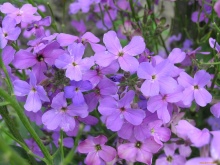
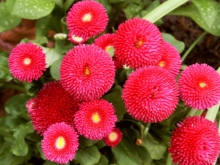
When choosing one-year border flowers, they try to achieve contrast in relation to the main part of the composition. For the border, you can use all crops of one year, the height of which is no more than 0.4 m. Pansies are popular. They are appreciated even by experienced designers, especially since the requirements for care are low.
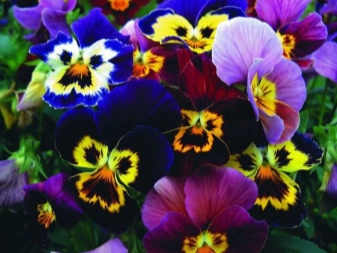
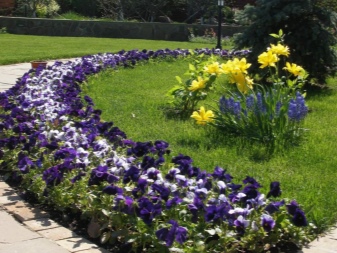
Important: you can achieve the earliest flowering by sowing seeds for seedlings in February. Then at the very end of spring it will be possible to plant it in a flower bed.
Snapdragon can be a good alternative. Its inflorescences are outwardly similar to those of gladioli. The color of the flower varies very flexibly depending on the cultivar. In colder areas, snapdragons are planted primarily through seedlings. Formally, the culture is considered perennial, but the complexity of care in this case will be excessively large, and sowing seeds every year simply makes the work of gardeners easier.
Beautiful annuals of nemophila have a clear sky color. They have to sow their seeds directly into the open ground. It is best to do this not earlier than mid-April. Then you can expect the emergence of seedlings in early May.It is advisable to sow the second sowing in July so that flowering continues until the beginning of autumn.
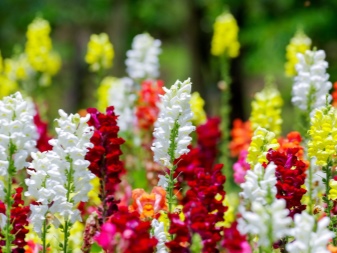
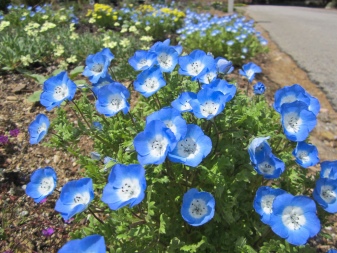
Speaking of climbing annual crops, sweet peas worth mentioning... This plant also has medium and tall forms. It is necessary to clarify every time when buying what exactly they are going to sell. You can sow sweet peas directly into the ground. You just have to choose places with intense sunlight, in addition, protected from the wind.
When picking up long-flowering undersized annuals, do not forget about ageratum. In its beauty, it may well compete with the recognized leaders of the plant world. Ageratum grows in the form of a bush. You can plant it in open ground after the end of the return cold. Seedlings are planted no earlier than March 15, and then if the weather permits.


Purslane grows very low (up to only 0.1 m). But real flower carpets are made from it. This species needs good sunlight and sandy soil. Sowing purslane in open ground is possible only after the arrival of stable heat. The plant can reproduce by self-seeding.
Balsam, aka touchy, also stands out for its attractive aesthetic properties. This plant grows best in wet partial shade. Balsams tolerate picking well. It is recommended to sow seedlings in March and pinch the top after planting on an outdoor plot.
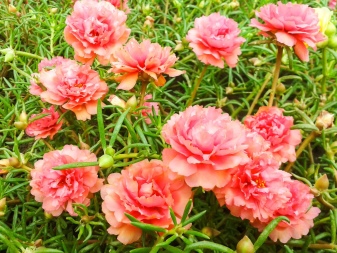
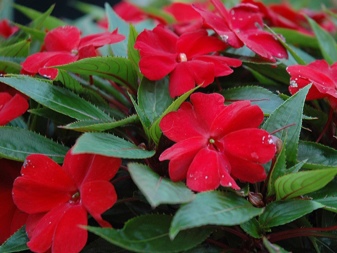
Medium and high
A striking example of medium annual flowers is calendula... Its decorative characteristics are brilliant even against the background of more popular cultures. Lush and at the same time delicate colors help to successfully stand out from the general mass of plants. Calendula grows well in most of the middle zone, except in places with an unfavorable climate. The height of the largest specimens does not exceed 0.7 m.
Blue cornflowers can be an equally attractive part of the garden area. The flowering of these plants begins in June and, under favorable circumstances, continues until the end of autumn. Reproduction of blue cornflower occurs by seeds. The culture is simultaneously resistant to drought and frost.
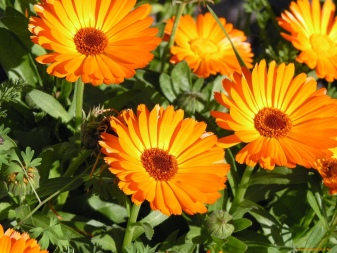

Cosmeya also deserves attention. Its delicate foliage is as attractive as the flowers. The flowering period lasts until the first cold weather. Shading kosmeya does not tolerate well. But where there is a bright sun, she reveals all her grace at once. Snapdragon is also popular, its inflorescences can reach 0.05-0.5 m.


In a tall group, dahlias deserve attention. These are just luxurious flowers - and almost everything is said by this definition. We can only add that these are shade-tolerant plants. And yet it is better to plant them not in dense, but in a light shade. There they will reveal their charm and external perfection much more fully.
Important: Dahlias should not be planted in lowlands. The accumulation of water affects them extremely destructively. It is even advisable to equip a drainage layer from a brick battle.
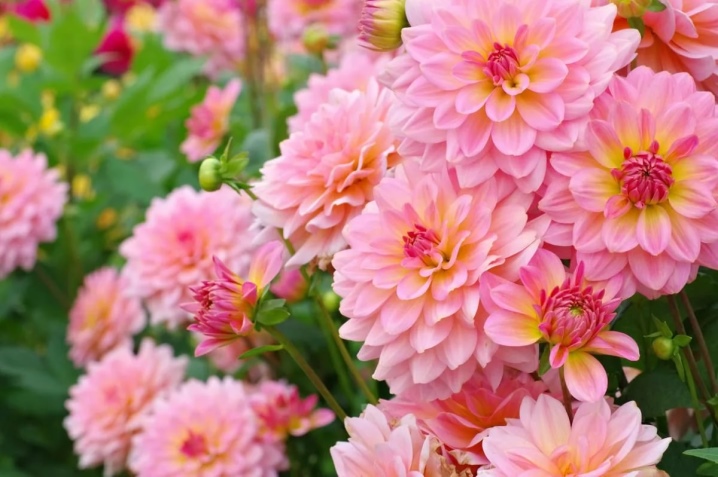
The stock rose is also worth mentioning. This is also an excellent-looking plant, as if decorated with strange fancy bows. At the height of fashion are now stock-roses of a dense, almost black color.
The stock rose loves light, but it can also survive slight partial shade. It goes well with other cultures. However, growers will be delighted to grow a group of stock roses separately as well. Most often, planting is carried out by seeds.
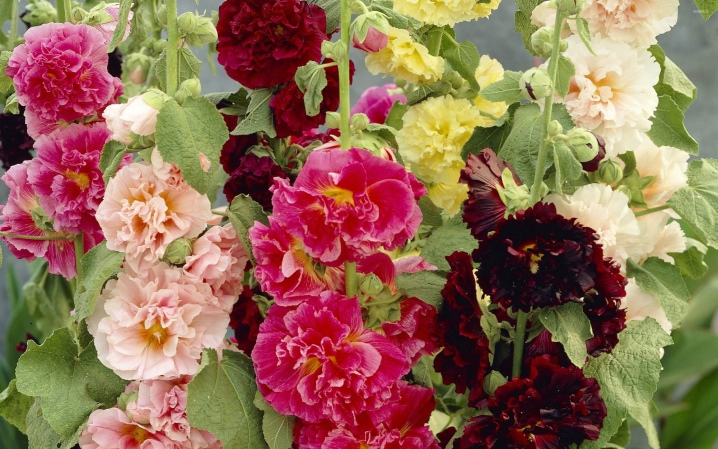
It is useful to familiarize yourself with a few more plants for a summer residence. A herbaceous plant with red-yellow flowers is primarily kalanchoe... Its inflorescences remain decorative for many weeks.
Much more popular, however, is white chamomile... You can find its varieties with a wide variety of flower and stem sizes. In everyday life, chamomile is often called other biological species - feverfew and nova.


But more often in recent years, they have become interested in still fast-growing annual flowers.They have one thing in common: the ability to grow without seedlings.
Godetia is a good example. - she produces both ordinary and double flowers, the color of which can vary. If the bushes have reached a great height, they will definitely need support. The flowerbed is advised to do with a little shading. Under good conditions, godetia will delight with flowers from July until the onset of frost.
An alternative is the Damascus Nigella. On the straight stems of the plant, rather thin feathery leaves are formed. The flowers are relatively small. After the end of flowering, the fruit is formed in the form of a box. Nigella seeds are capable of scaring away common moths. You can sow the seeds of this culture both in autumn and spring.
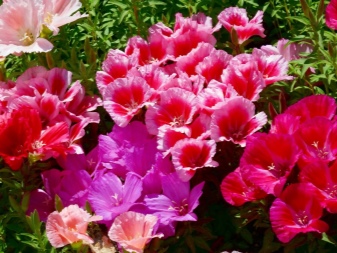

How to choose?
It would be possible for a long time to get acquainted with a variety of annual crops. But no less important than general information is the prosaic question - what to plant in a particular place. It is worth remembering that cold resistance is not everything. The unpredictability of summer weather can create just as many surprises. And therefore, in places with insufficient rainfall, it is better to choose drought-resistant annuals, such as:
- mirabilis;
- purslane;
- scented tobacco.
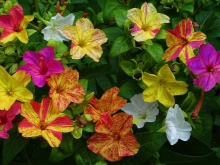
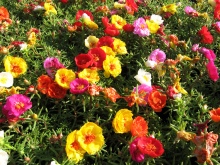
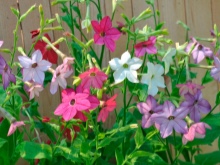
In the Urals, however, the situation is not the same as in the North Caucasian regions. In the zone of risky farming, it is advisable to give preference to the following types:
- nasturtium;
- cornflowers;
- marigold;
- cosmos;
- Chinese asters;
- cellosis;
- gypsophila.
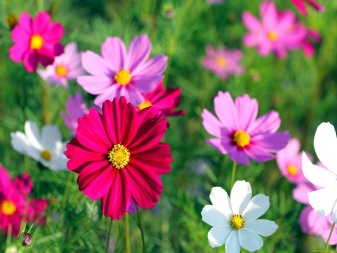
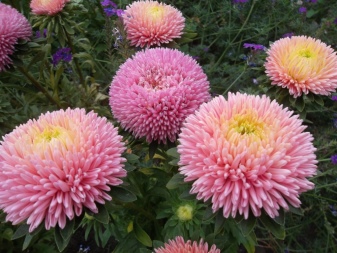
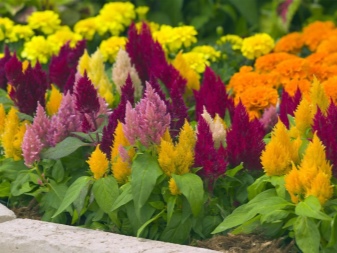
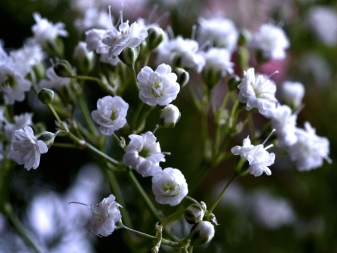
Almost always the same plants are suitable for Siberia. But the farther north the region, the more important the frost resistance of a particular variety... Nevertheless, it is impossible to reduce the choice of colors only to climate adaptation. It is necessary to immediately consider whether the place reserved for landing will be shaded or illuminated by the sun.
And here flower color is selected individually... This applies not only to the color option, but also to its saturation. In a small area, connoisseurs advise avoiding bush plants. It is much better to use there eschsholzia, purslane, creeping dimorphoteka in the format of a rock garden.
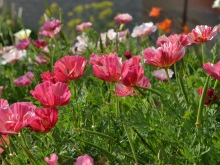
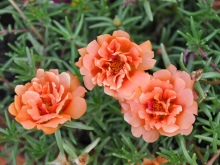
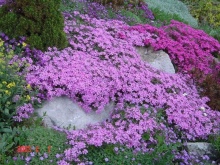
Important: the type of flower bed or other decorative structure is selected after the selection of the flowers used, and not vice versa. When looking at any attractive landscape design photograph, it is worth considering how the same concept will look on a specific site.
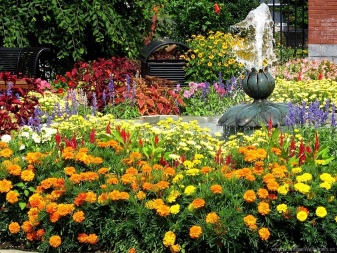

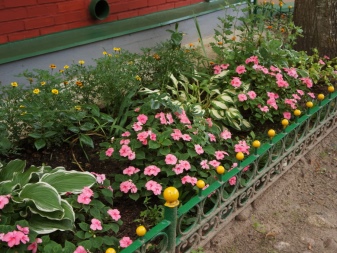

How to register?
Flowerbed
Planting annuals in a flower bed with your own hands is not so difficult. You can take ready-made design schemes as a basis. Marigolds and petunias are often planted along long or winding garden paths. Lilies and other tall plants are used as a background. You can make a purely one-year-old flower bed based on:
- tuberous and ever-flowering begonias;
- cellosis;
- various varieties of marigolds;
- dahlia;
- salvia;
- petunias;
- lobelia;
- nasturtium.

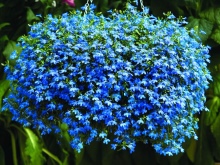
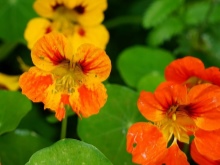
Cosmea and snapdragon go very well, especially if they are unevenly colored. It is easy to form a semblance of a Moorish lawn from such crops. This approach involves the dosed use of both gentle and rich tones. Celosia is suitable for arranging juicy color accents. Often, low flowers are planted around the perimeter, and for high flowers, the center of the composition is assigned (the opposite combination is understandably meaningless).
On round flower beds, it is recommended to limit yourself to two types of plants, one of which is located strictly along the perimeter. For monoclumb it is worth using:
- ageratum;
- alissum;
- salvia.
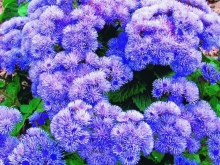
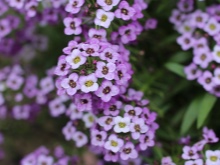
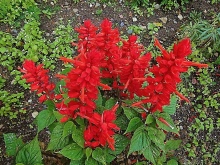
Modular flower garden
Arrangement of modular flower beds has now become no less popular than the creation of traditional flower beds. It is customary to refer to a kind of cell with rigidly defined boundaries as a module in garden design. The module area is always small. With the help of the border, the flower garden is clearly separated from paths or lawns. The role of the module perimeter can also be to separate the areas allocated for different plants.
Dividing lines can be made from the following materials:
- metal;
- plastic;
- concrete;
- bricks;
- boards;
- natural stone.
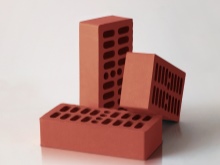
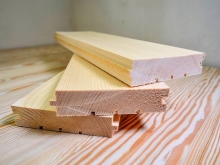
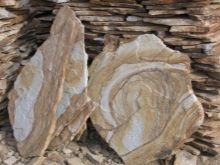
The choice of design options is very wide. Often practiced, for example, is the formation of a lush floral carpet. The forms of the modules also vary. Along with circles, squares, there are rhombuses, triangles, stars, stylized objects and figures. The module area can be 1-2 square meters. m, although they are usually smaller.
The outer borders can be slightly noticeable if you use strips of plastic, metal for them. When placed on a level with cultivated plants, borders are made of stone, wood, and cast from concrete. In this case, it is worth using contrasting colors. The landscape style assumes a different approach - the creation of modules with free borders inside and outside. The drawing in this case most often does not have any pronounced symmetry.

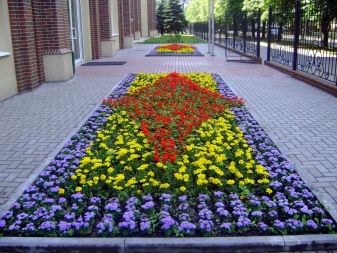
Large modules are very rare. Such plots range from 2 to 10 sq. m can be found mainly in a park or on a city street. But if there is enough space and desire, you can do something similar in your garden. For border decoration, sidewalk curbs or natural stone are used. They do something like a parterre or a low flower bed, but it is important that this flower bed has a geometrically perfect shape.
Sometimes lawns are designed with container modules. On the main background, a floral pattern is prepared from a metal strip. An alternative option is various symbolic images, coats of arms and stylized drawings. Inert materials of contrasting colors are placed inside the patterns. Red stands for bricks, white for gravel, and black for charcoal.
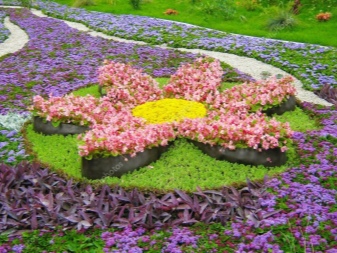
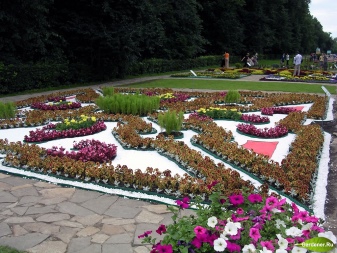
As an example, you can take the flower parterres of the palace complexes. But, of course, any idea and ready-made scheme must be creatively reworked. First, you should decide on the style and design of the flower garden and only then select plants in it. Square modules and ready-made containers are predominantly filled with monoculture. Small round modules on the lawn can be made by laying out stones - then all parts must be coordinated with each other.
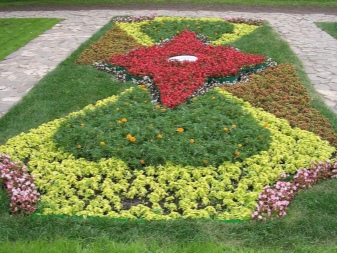
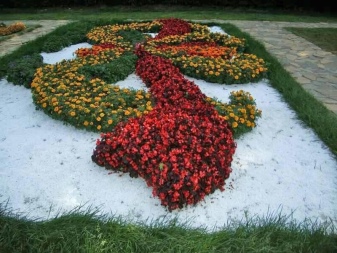
Mixborders
Creating a mixborder from annuals is almost easier than the other listed options. Many gardeners come to this idea spontaneously and do not even suspect what their decorative work is called. The bottom line is simple:
- the lowest crops are planted ahead;
- back most high;
- the center is closed by "middle peasants".
This approach ensures easy collection of plants with different habit and color in one place. There is no need to worry too much about the timing of flowering or the size of the leaves. One has only to take into account that the length of a classic mixborder is at least twice its width. Also, the traditional flawless approach requires that the plants in the planting pass the "flowering baton" to each other throughout the season. Along with flowers, in the mixborder, you can also plant various grasses, shrubs, and even combine annual and perennial crops in different proportions.
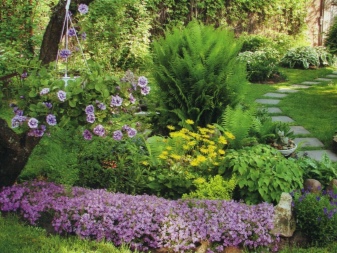
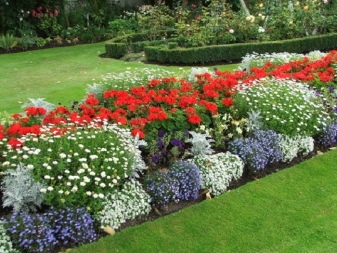
All about annual flowers for summer cottages, see the video below.







































































































The comment was sent successfully.